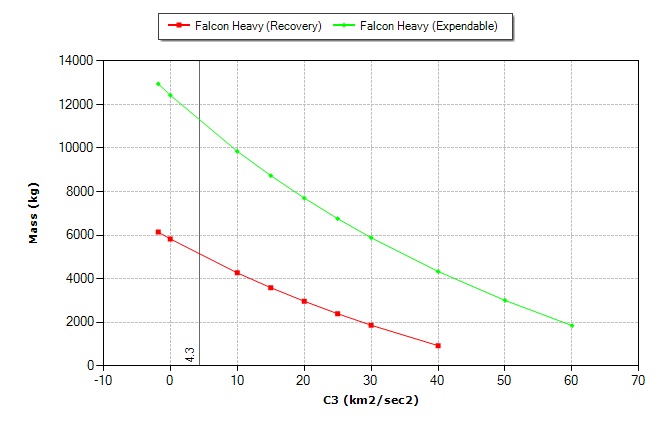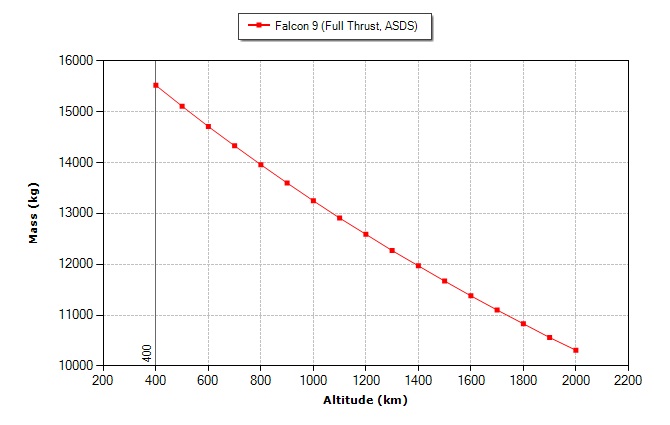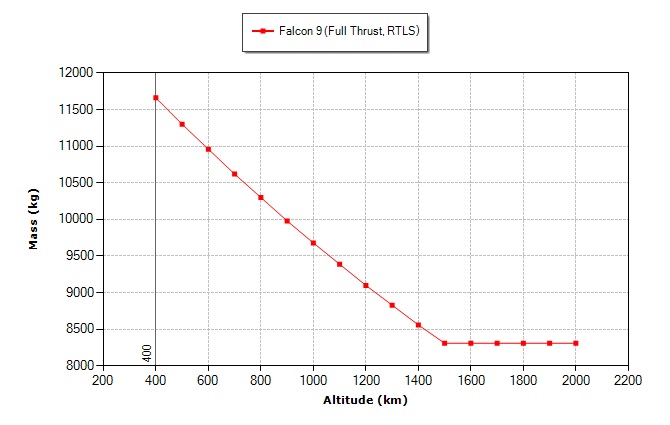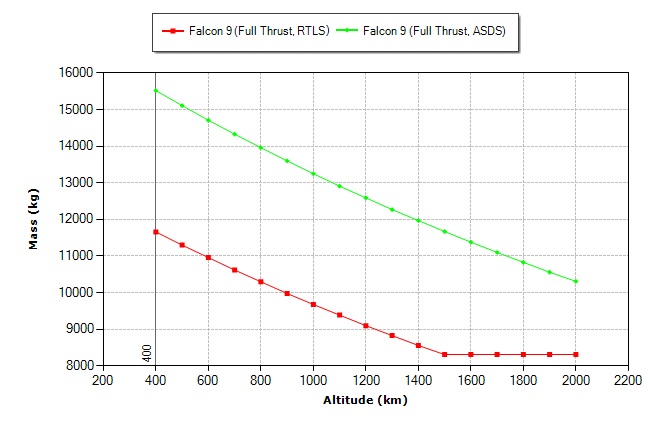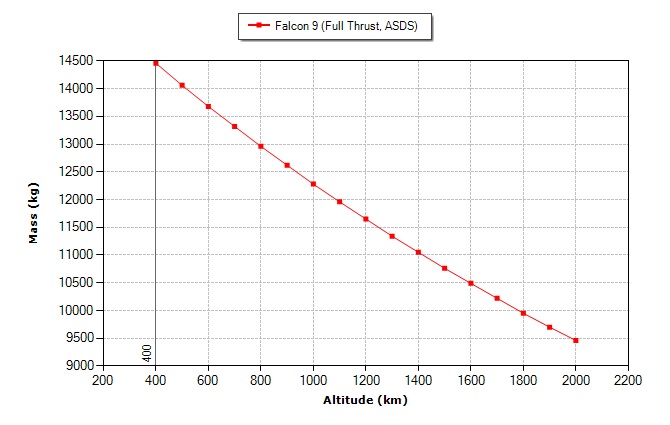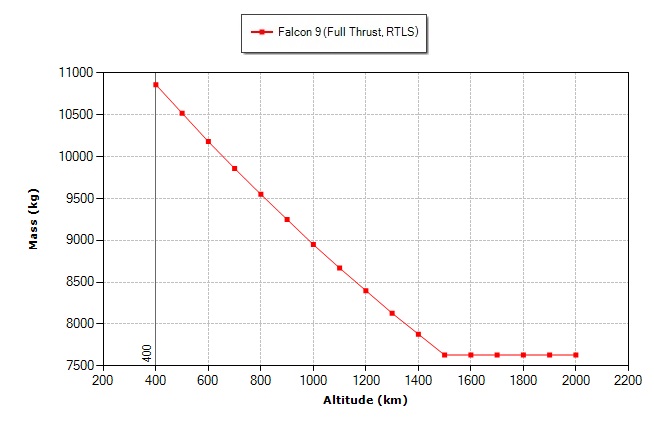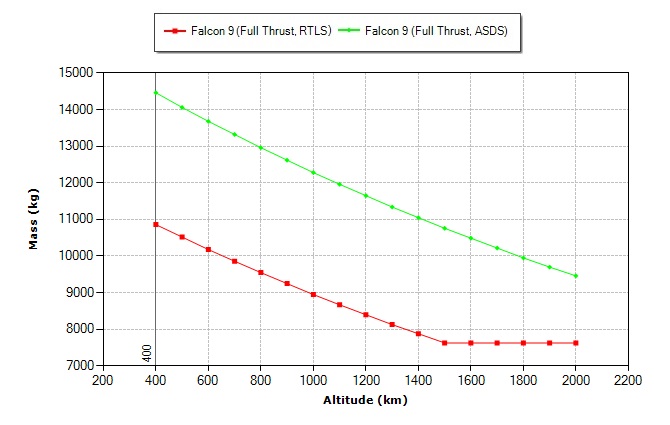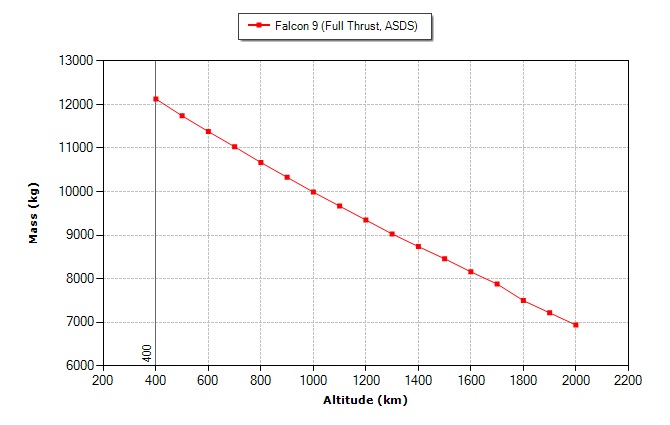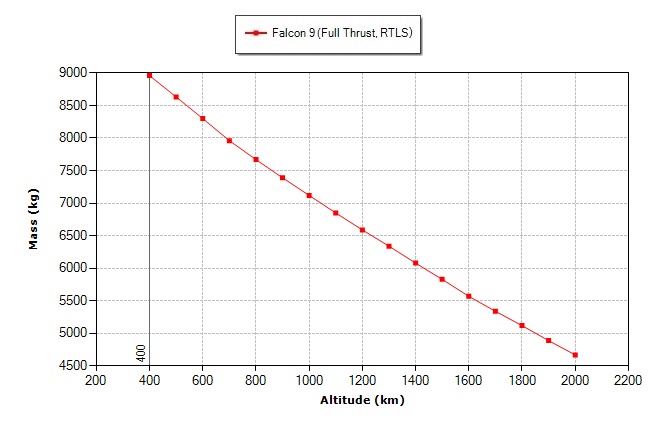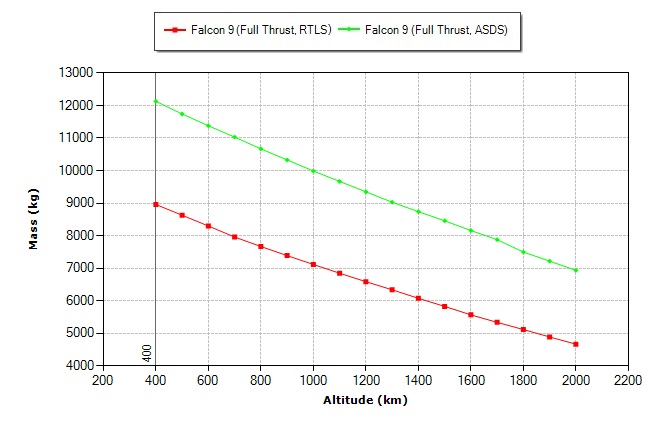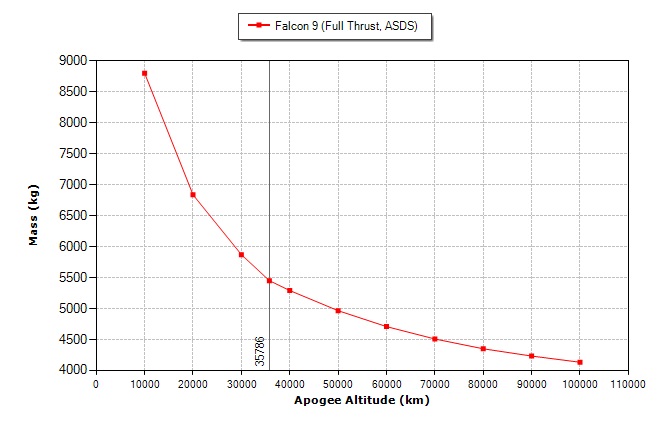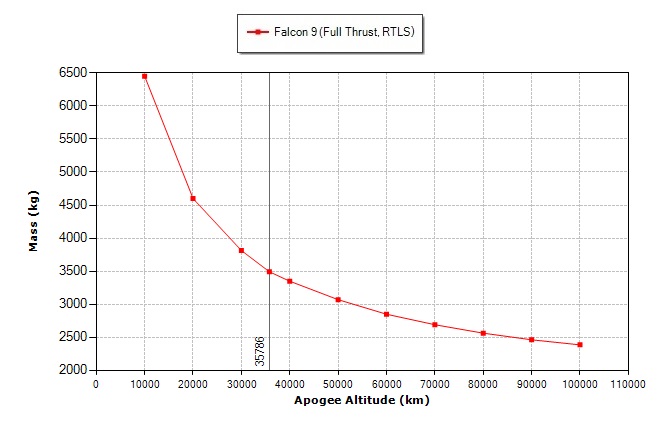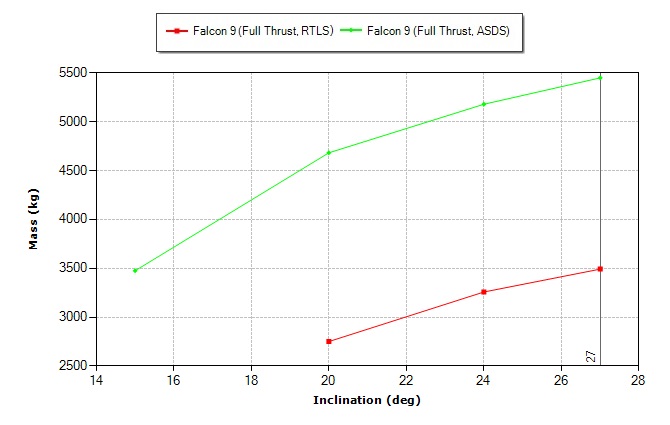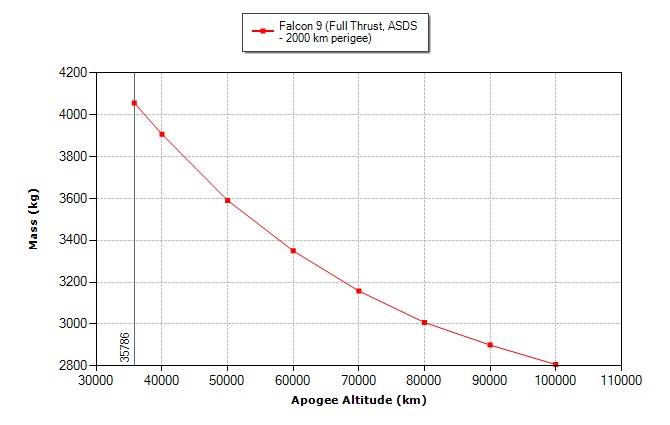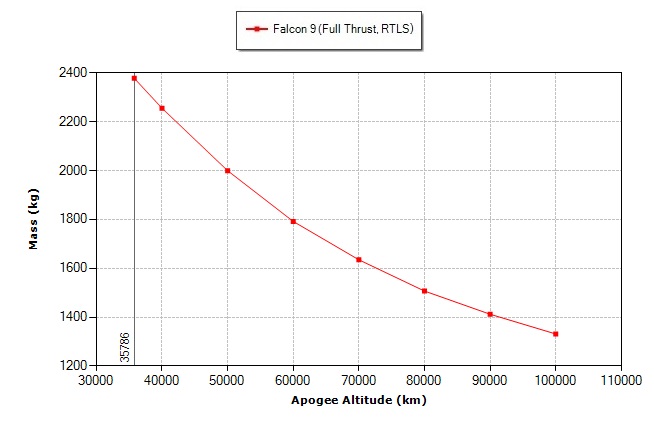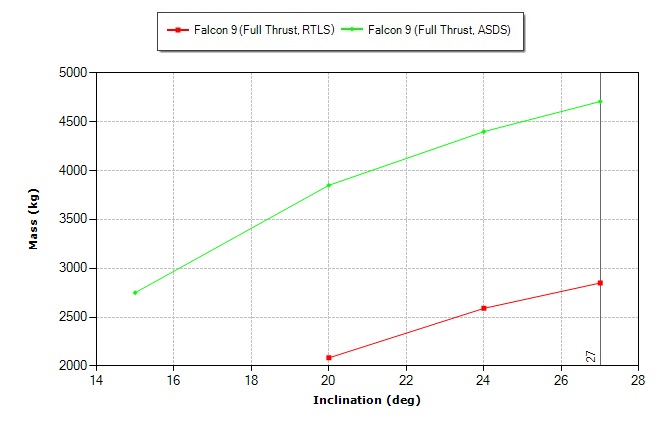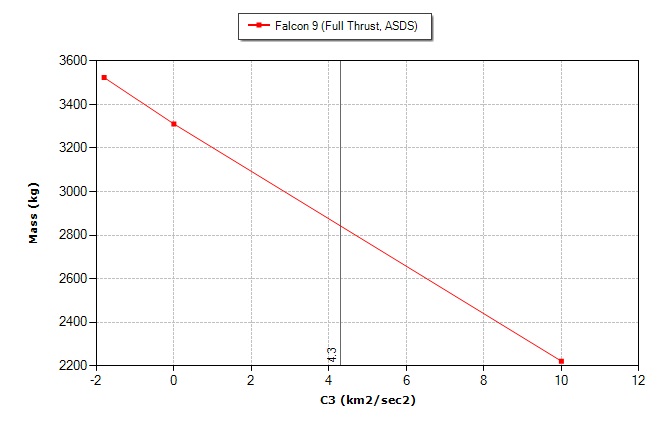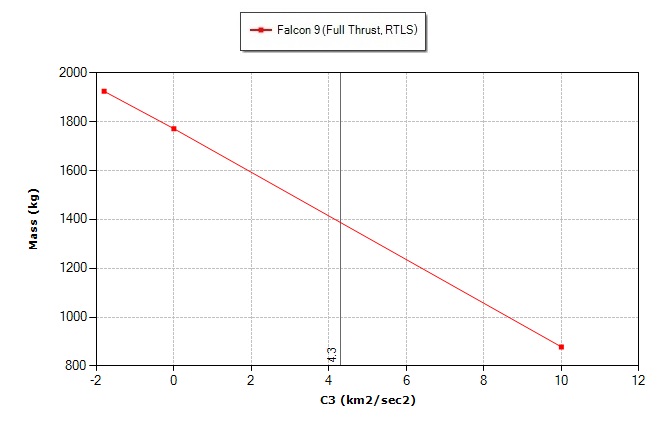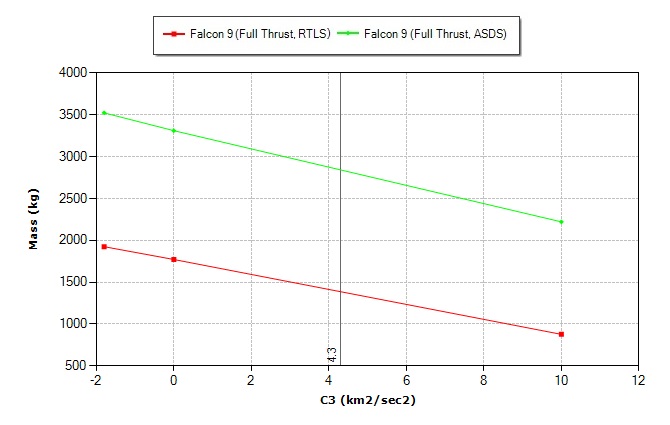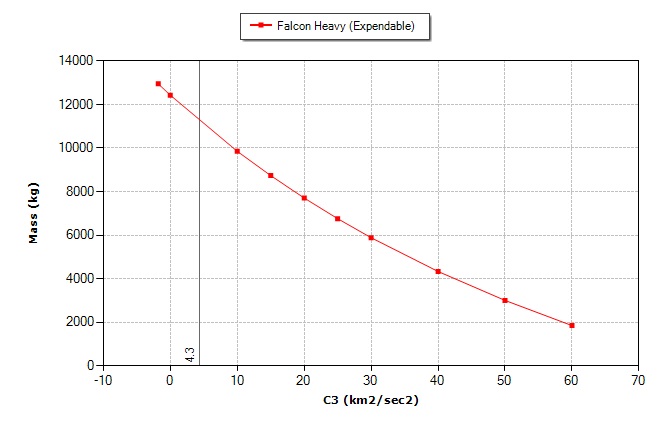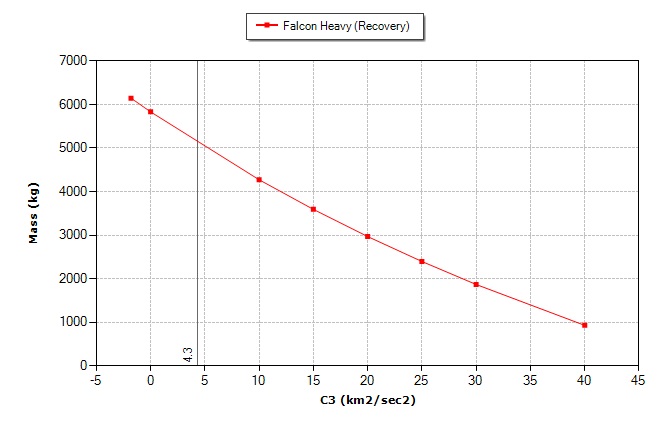Falcon 9 & Falcon Heavy Performance Data
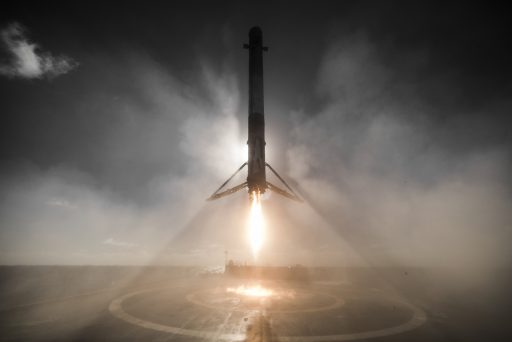
NASA's Launch Services Program published updated performance data for SpaceX's Falcon 9 and Falcon Heavy rockets, providing insight into performance penalties imposed by the company's re-use aspirations. Numbers for Falcon 9 are available for all types of orbits starting 400 Kilometers in altitude while data on Falcon Heavy's performance is available for high-energy trajectories only.
Under NASA's NLS contract, SpaceX submitted two performance levels for the Falcon 9 Full Thrust Vehicle including performance holdbacks to allow for a Return-to-Launch-Site (RTLS) first stage recovery and Automated Spaceport Drone Ship (ASDS) recovery. Based on data released directly by SpaceX, an ASDS landing comes with a performance penalty of 30 to 35% while a land-based recovery (RTLS) requires approximately half the rocket's performance. Preliminary performance data for Falcon Heavy indicates a penalty of approximately 55% when recovering the vehicle's cores.
Falcon 9 Performance Data
| Destination | Falcon 9, RTLS | Falcon 9, ASDS | Falcon 9, Expendable |
|---|---|---|---|
| LEO - 200km, 28.5° | 22,800kg* | ||
| LEO - 400km, 28.5° | 11,660kg | 15,520kg | |
| ISS - 400km, 51.6° | 10,860kg | 14,460kg | |
| SSO - 500km | 8,630kg | 11,740kg | |
| SSO - 700km | 7,960kg | 11,030kg | |
| GTO - 35,786km, 27° | 3,490kg | 5,450kg | 8,300kg* |
| GTO - 2000km Perigee | 2,375kg | 4,055kg | |
| SSTO - 65,000km, 27° | 2,770kg | 4,605kg | |
| Mars | 4,020kg* | ||
| Mars - 4.3km2/sec2 | 1,385kg | 2,840kg |
Falcon Heavy Performance Data
| Destination | Falcon Heavy, Recovery | Falcon Heavy, Expendable |
|---|---|---|
| LEO - 200km, 28.5° | 54,400kg* | |
| GTO - 35,786km, 27° | 8,000kg* | 22,200kg* |
| Mars | 13,600kg* | |
| Mars - 4.3km2/sec2 | 5,160kg | 11,320kg |
All Images: NASA Launch Services Program

